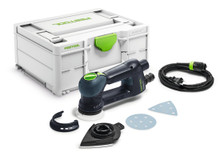onocoffee
Member
The shields covering the headlights on my eleven year old truck have started to get cloudy and I would like to polish them. Of course, I would like to use the Festool product but that's quite a pricey proposition for the bottles and the pads. Do you have some recommended products to use instead? I have both an RO90 and RO150 to do the job.
Thanks!
Thanks!












